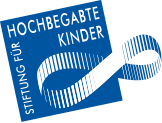This glossary of terms is based on the definitions from the National Association for Gifted Children. For more information visit:
A
Acceleration
A strategy of progressing through education at rates faster or ages younger than the norm. This can occur through grade skipping or subject acceleration (e.g., a fifth-grade student taking sixth-grade math).
B
Bloom's Taxonomy
Developed in 1956 by Benjamin Bloom, the taxonomy is often used to develop curriculum for gifted children. There are six levels within the taxonomy that move from basic to high levels of thinking. The original levels included knowledge, comprehension, application, analysis, synthesis, and evaluation. The taxonomy was later updated to reflect 21st-century skills, with the levels changing to remembering, understanding, applying, analyzing, evaluating, and creating.
C
Cluster Grouping
A grouping assignment for gifted students in the regular heterogeneous classroom. Typically, five or six gifted students with similar needs, abilities, or interests are “clustered” in the same classroom, which allows the teacher to more efficiently differentiate assignments for a group of advanced learners rather than just one or two students.
Compacting
An instructional technique that allows teachers to adjust curriculum for students by determining which students already have mastered most or all of the learning outcomes and providing replacement instruction or activities that enable a more challenging and productive use of the student’s time.
D
Differentiation
Modifying curriculum and instruction according to content, pacing, and/or product to meet unique student needs in the classroom.
E
Enrichement
Activities that add or go beyond the existing curriculum. They may occur in the classroom or in a separate setting such as a pull-out program.
F
Flexible Grouping
An instructional strategy where students are grouped together to receive appropriately challenging instruction. True flexible grouping permits students to move in and out of various grouping patterns, depending on the course content. Grouping can be determined by ability, size, and/or interest. Read the NAGC position on grouping.
G
Gifted and Talented Children
The federal Elementary and Secondary Education Act defines gifted and talented students as “Students, children, or youth who give evidence of high achievement capability in areas such as intellectual, creative, artistic, or leadership capacity, or in specific academic fields, and who need services and activities not ordinarily provided by the school in order to fully develop those capabilities.”
H
Heterogeneous Grouping
Grouping students by mixed ability or readiness levels. A heterogeneous classroom is one in which a teacher is expected to meet a broad range of student needs or readiness levels. Also referred to as inclusion or inclusive classrooms.
Homogeneous Grouping
Grouping students by need, ability, or interest. Although variations between students exist in a homogeneous classroom, the intent of this grouping pattern is to restrict the range of student readiness or needs that a teacher must address.
I
Identification
The process of determining students qualified for gifted or advanced programming, identification most commonly occurs through the use of intelligence or other testing. Many researchers place emphasis on using multiple pathways for identification, adding teacher, parent, or peer nominations or authentic assessments such as portfolios of student work to the process.
Inclusion
An inclusive classroom contains students of varying ability levels. See heterogenous grouping (above) for more information.
Independent Study
A self-directed learning strategy where the teacher acts as guide or facilitator and the student plays a more active role in designing and managing his or her own learning, often on a topic of special interest to the student.
Individual Education Plan
An IEP is a document that delineates special education services for special-needs students. The IEP includes any modifications that are required in the regular classroom and any additional special programs or services. Federal law and the majority of states do not require IEPs for gifted learners.
Intelligence
The ability to learn, reason, and problem solve. Debate revolves around the nature of intelligence as to whether it is an innate quality or something that is developed as a result of interacting with the environment. Many researchers believe that it is a combination of the two.
Intelligence Quotient IQ
A numerical representation of intelligence. IQ is derived from dividing mental age (result from an intelligence test) by the chronological age times 100. Traditionally, an average IQ is considered to be 100.
M
Mentor
A community member who shares his or her expertise with a student of similar career or field of study aspirations.
O
Overexcitability
A theory proposed by Kazimierz Dąbrowski, a Polish psychologist, psychiatrist, and physician, that suggests that some individuals have heightened sensitivities, awareness, and intensity in one or more of five areas: psychomotor, sensual, intellectual, imaginational, and emotional.
P
Portfolios
An alternative or supplement to traditional measures of giftedness, portfolios offer a collection of student work over time that can help to determine achievement and progress. Many of the elements found in portfolios cannot be captured by a standardized test.
Pull-Out Program
A program that takes a student out of the regular classroom during the school day for special programming.
S
Social-Emotional Needs
Gifted and talented students may have affective needs that include heightened or unusual sensitivity to self-awareness, emotions, and expectations of themselves or others, and a sense of justice, moral judgment, or altruism. Counselors working in this area may address issues such as perfectionism, depression, low self-concept, bullying, or underachievement.
T
Talent Development
Programs, curricula, and services for gifted and talented students that can best meet their needs, promote their achievements in life, and contribute to the enhancement of our society when schools identify students' specific talent strengths and focus educational services on these talents.
Twice-Exceptional
A term used to describe a student who is both gifted and disabled. These students may also be referred to as having dual exceptionalities or as being gifted with learning disabilities (GT/LD). This also applies to students who are gifted with ADHD or gifted with autism.
U
Underachieving/ Underachievement
A term used to describe the discrepancy between a student’s performance and his or her potential or ability to perform at a much higher level.
